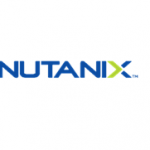By Michael Lok, Managing Director, Southeast Asia, Ruckus Wireless
The LTE small cell market has generated a great deal of interest from mobile network operators (MNOs) and RAN vendors over the past few years. The goals of this effort are to greatly increase cellular capacity in high traffic locations and to improve indoor coverage. The primary applications will be packet voice and other real-time applications, along with high value data traffic.
Despite the industry’s forecast of rapid growth in LTE small cell deployments, this growth has been slow to materialise. In a recent report, ABI Research forecasts that the number of LTE small cells will double in 2015. The Asia Pacific region is expected to represent over 50% of the worldwide small cell equipment market by 2018. However, ABI Research is also expecting that this growth will be slowed down by the impact of outdoor DAS (distributed antenna systems) and Wi-Fi.
The real challenges surrounding LTE small cell deployments are on the business model – the issue of “who pays” to deploy the network. With macro cellular deployments, the operator always pays, but with small cell deployments in hotels, shopping malls, hospitals, and schools the burden starts to shift to the venue.
The enterprise LTE small cell market is much more like Wi-Fi than it is like the outdoor macro cellular market. With Wi-Fi, the venue almost always pays, the network can be installed by a value added reseller, and the equipment is inexpensive and easy to operate.
Looking at the LTE small cell opportunity, it is important to focus on the indoor opportunity, as that is where most data traffic is consumed, and is where cellular services will sometimes have coverage issues. Among indoor wireless services, DAS and Wi-Fi are two technologies that have been very successful.
DAS are generally deployed in high-density locations, such as stadiums, airports and convention centers. The high cost of DAS deployments has limited them to these very large, heavily utilised locations. DAS primarily provides good voice coverage in these large venues, while Wi-Fi networks handle the heavy data load. Both technologies have a big advantage when it comes to deploying indoors and that is neutral host support. Large venues will not typically allow a radio technology into their building unless it can support all users at that venue. DAS systems are usually deployed by neutral host service providers, which resell access to the major MNOs.
Wi-Fi networks are also neutral host and are typically installed by the venue to provide data services in their facility. In some cases, the venue owns the network and in other cases, they purchase a managed service.
Say Hello to Small Cells
LTE small cells provide enhanced cellular services in venues of all types. In really large venues that attract thousands of people per day, the mobile operator is more than willing to pay for the small cell deployment along with any site rental fees. When going to smaller venues, the subject of who pays for the small cell gets a lot more complicated. In some cases the MNO might pay, but more often than not, the venue has to pay. There just isn’t enough traffic to justify the expense for the operator and they will fall back on the outside-in approach to cellular coverage.
To get the venue to pay, the solution almost always has to be neutral host. It all starts with spectrum, and more to the point, whose spectrum.
- National roaming is one way to solve this problem. With this approach, the LTE small cell network is installed using spectrum of one of the national operators who then sets up roaming arrangements with all their competitors such that all their subscribers can now access the network. This gives the venue an indoor cellular network that anyone can access. This is not a technical solution to the neutral host problem, but a business solution.
- Another option is to again use the spectrum of one of the national operators, but instead of having to roam with the host operator, the small cell can support the PLMN IDs of the other MNOs who can then tunnel traffic back to their Evolved Packet Cores (EPC). This essentially creates a shared small cell in much the same way that a Wi-Fi access point can be shared using separate SSIDs (service set identifiers). This is better known as MOCN (multiple operator core network).
- A third option is for a neutral host service provider to deploy the network using its own licensed spectrum. These neutral host service providers might also handle DAS deployments as well.
Basically anyone that controls real estate can operate a neutral host LTE small cell network using this spectrum management approach. These neutral host operators would roam with the major MNOs. They need not have any customers of their own and would strictly be acting as a visited network. The neutral host service providers would be paid by the venue to install and operate the network so as to provide greatly enhanced cellular service in that facility. The venue recovers this cost because a strong cellular service helps them to sell whatever it is that drives their business.
The most fascinating aspect of the LTE small cell business is not in the technology but in the business models that will emerge to support and pay for this greatly enhanced cellular connectivity.







